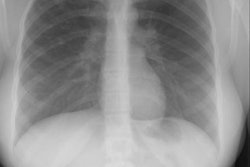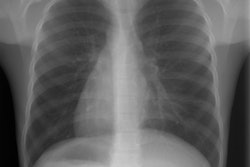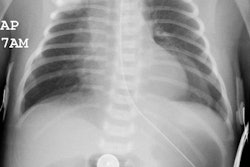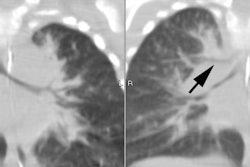Radiology 1997 May;203(2):405-409. Balloon dilation of congenital and acquired stenosis of the trachea and bronchi.
Jaffe RB
PURPOSE: To document the results of balloon dilation of the trachea and bronchi in infants and children with congenital and acquired stenosis. MATERIALS AND METHODS: Balloon dilation of congenital and acquired tracheal and bronchial stenosis was performed in six patients aged 5 weeks to 2 years 8 months (mean, 12.5 months). Bronchography with nonionic water-soluble contrast medium was performed initially through an endotracheal or tracheostomy tube with the patient sedated or under general anesthesia. Balloon size (2-8 mm) was determined on the basis of diameter of the airway lumen distal to the stenosis measured at bronchoscopy. Twenty-three incremental balloon dilation procedures were performed in these six patients at time intervals from 3 days to 2 years. Usually, three balloon insufflations were performed for 20-45 seconds at 4-6 atm during each procedure. RESULTS: Symptomatic improvement or increased lumen diameter occurred in four of six patients after balloon dilation. No improvement was seen in two patients: One had unrecognized vascular compression of the proximal left bronchus and distal trachea, and the other, of the left upper lobe bronchus. There were no complications. CONCLUSION: Balloon dilation was a safe and effective palliative procedure for treatment of congenital and acquired stenosis of the trachea and bronchi. Symptomatic improvement and increased lumen diameter occurred but may be temporary. Performance of serial dilation procedures was necessary to effect a long-term cure.
PMID: 9114095, MUID: 97268747



